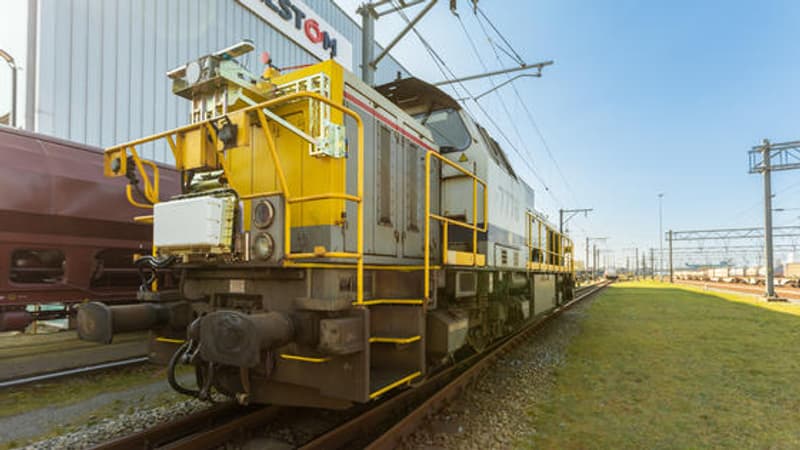Running trains autonomously, without human intervention, is no longer science fiction. The reality in urban transport (soon 3 metro lines in Paris will be 100% automated), in the railway where the limitations are much more numerous, things are progressing.
Le français Alstom qui travaille sur la question depuis de nombreuses années annonce ainsi avoir “fait la démonstration du plus haut niveau d’automatisation sur une locomotive de manœuvre (qui est utilisée pour composer les rames de fret avant leur départ, NDLR) pres de Breda , in the Netherlands”. It is a world first.
This demonstration was carried out in the framework of a partnership with the Dutch infrastructure manager ProRail and the Belgian rail operator Lineas.
The manufacturer thus affirms that starting, driving and stopping have been fully automated, and that the management of obstacles or unforeseen events has been carried out without the direct intervention of the train personnel during the manoeuvres.
“The locomotive, which worked autonomously, faced several obstacles (a person, a car, a wagon and an incorrectly placed switch) and reacted completely autonomously and without the intervention of the active personnel on board,” explains the builder. .
New perspectives for freight transport
To achieve this, the company has developed an intelligent obstacle detection and recognition system that interacts with Alstom’s automatic train operation system, allowing the train to react autonomously to various obstacles.
“By integrating advanced obstacle detection into our autonomous driving systems, we have shown that it is possible to make trains ‘see’ ahead and deal with the unexpected safely. The positive results show that Alstom has the technology to help operators with autonomous driving technologies that will ultimately improve the operational performance of charging lines,” says Stéphane Féray-Beaumont, Alstom’s Vice President of Innovation and Smart Mobility.
Enough to open prospects for increasing the capacity of cargo operations, in a context of growing demand for services in this sector…
On the passenger transport side, the objective of automation is to circulate more regional trains on lines with optimized speeds and, incidentally, reduce operating costs. R&D is also progressing.
Autonomous passenger trains: regional lines first
Across the Rhine, Alstom is working with the Lower Saxony region and various institutions such as the German Center for Aeronautics and Astronautics and the Technical University of Berlin to develop such a train.
Last June, the manufacturer announced that “automated driving will be tested on the railway lines in northern Germany” without giving a precise timetable.
“For these tests, new autonomous driving systems will be developed in a first phase, including the recognition of side signals, which should make it possible to recognize and interpret the railway traffic signals installed along the tracks. In addition, the train must be able to detect obstacles on the track”, explains Alstom.
The manufacturer specifies that “in the event of a malfunction, the train will be remotely controlled or piloted by the train attendant.”
Also, in the long run, a driver should remain on board these autonomous trains for obvious safety reasons.
SNCF targets autonomous passenger trains in 2023
“In a second phase, automated driving will be carried out under real conditions in a full-scale laboratory. The new systems will be installed in two trains of the operator LNVG pre-equipped with the ETCS system (European Train Control System) and tested in operation The results of development and operation will allow preparation for the subsequent certification of fully autonomous trains and continue with the automation of regional transport .
Remember that in Francethe SNCF associated with Alstom, Bosch, Spirops, Thales and the Railenium Institute for Technological Research carried out a prototype autonomous test TER train in 2021 on the track located between Aulnoye and Busigny and between Busigny and Calais.
The tests are carried out in several stages. “Semi-autonomous driving allows the acceleration and braking of the train to be automated, supervised by a driver. These tests are a key step towards the ultimate goal set by the consortium: master full autonomy by 2023, ”he explained a year ago. These large-scale tests continued this year with a still-maintained target of the second half of 2023.
In this project, the central theme is obviously security. These tests must, therefore, support “the demonstration of security necessary for the future authorization of circulation of rolling stock”. In addition to railway security, the sensitive point is computer security, with the autonomous train being ultra-connected to be able to operate. This implies the risk of piracy. A point that was taken into account from the beginning of the project, says the SNCF.
Source: BFM TV


